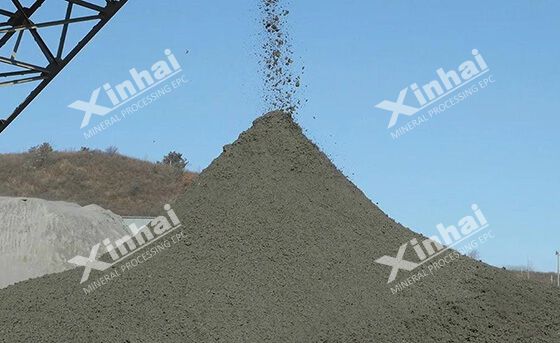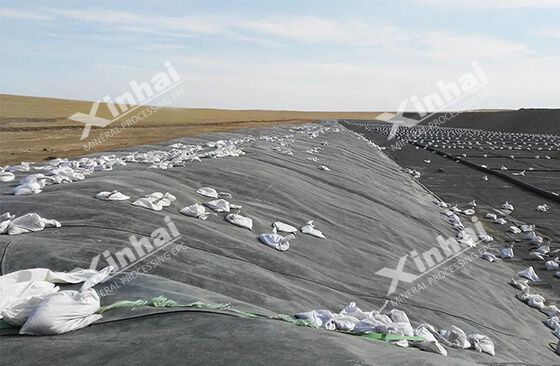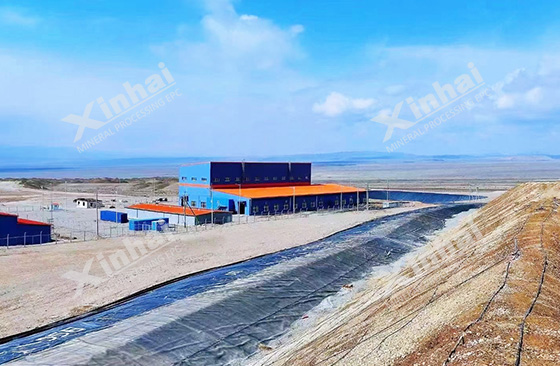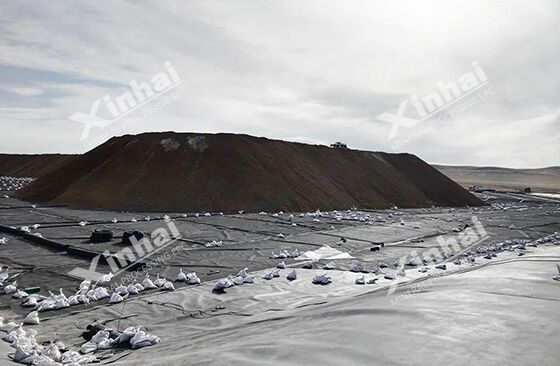
Gold ore heap leaching is an important method for gold extraction. Its leaching effect is affected by many factors, among which the particle size of the ore and the permeability of the ore pile have an important influence on the smooth progress of the heap leaching process. This article will discuss the impact of these factors on gold heap leaching, and how to optimize measures to improve the efficiency of the gold ore heap leaching process.

The exposed surface area of gold particles and the permeability of the ore heap are related to the particle size of the gold ore, and directly affect the heap leaching efficiency of the gold ore. The finer the ore is crushed, the larger the exposed area of the gold particles, the larger the contact area between the leaching liquid and the gold particles, and the faster the leaching speed of gold. However, when the ore particle size is too fine, the permeability of the ore heap decreases, and the leaching liquid is difficult to penetrate the ore heap evenly, which will cause the leaching efficiency to decrease. Too fine ore powder will also affect the subsequent clearing process of the ore heap, prolong the washing time, and increase the operation cycle. Too fine ore powder will also cause the loss of gold particles during the processing process, so it is necessary to control the particle size of the ore to be leached according to the physical properties of the ore.

When processing relatively loose ores with high clay content, increase the crushing particle size and control the particle size within the range of -50mm or -30mm. For dense gold ores with low clay content, appropriately reduce the crushing particle size and control it at around -10mm.
Whether the permeability of the heap is good or not will directly affect the heap leaching effect. When the permeability of the heap is good, the leaching liquid flows smoothly, can quickly pass through the heap and take away the easily soluble gold, and then can accelerate the leaching reaction, shorten the heap leaching cycle, and improve the leaching efficiency of gold. When the permeability is poor, the heap leaching operation of the gold mine will be seriously affected, and even the leaching process will be impossible.

The permeability of the heap is affected by many factors, including ore particle size, fine ore mud and clay content in the ore, heap building method and heap height. Ores with larger particle size can ensure that the heap has good permeability, while ores with finer particle size will reduce its permeability. The clay contained in the gold ore will swell under the action of water, blocking the pores of the heap, resulting in a decrease in the permeability of the heap. In order to avoid the influence of clay on heap leaching, the clay content in the heap should not exceed 35%. When the clay content and fine ore mud content in the ore are high, the method of pre-granulation into agglomerates can be used before heap leaching.
The heap building method of the ore heap will directly affect the internal porosity and the uniformity of solution percolation, and thus affect the effect of the heap leaching operation. There are two commonly used heap building methods for gold heap leaching: multi-heap building method and layered heap building method. The multi-heap building method is easy to operate, but because this method is prone to segregation, the layered heap building method is more widely used in actual production. When using the layered heap building method, a waste rock slope driveway is built in front of the heap leaching site, and the ore is transported to the heap leaching area by a mine car, and then the bulldozer is used to build the heap layer by layer. The height of each layer is generally 1.5m-2m until it reaches the height required by the design.

During the heap leaching process of gold mines, the heap building should try to avoid the segregation of coarse and fine particles to ensure the uniform distribution of fine particles inside the ore heap. It is also necessary to avoid over-compacting the ore heap, maintain its looseness, and ensure the permeability of the ore heap.
The height of the ore pile will also have an important impact on the heap leaching of gold ore. A higher ore pile will affect its permeability, prolong the leaching time, and thus reduce the leaching efficiency of gold. When the ore particle size is small and the clay and impurity content is high, the ore pile is too high, which will lead to insufficient oxygen and cyanide in the leaching solution, thereby reducing the dissolution efficiency of gold. In actual production, the height of the ore pile is generally controlled between 3-10 meters, but it also needs to be reasonably adjusted according to the ore particle size, clay content and production scale.

The above content briefly introduces the influence of ore particle size, ore pile permeability, heap building method and ore pile height on gold ore heap leaching. In actual production, reasonable control of these factors can not only improve the heap leaching efficiency but also reduce the loss of gold particles, and at the same time optimize the heap leaching operation cycle. Accurately grasping the physical and chemical properties of the ore, selecting the appropriate gold ore heap leaching method and adjusting the ore pile height can ensure efficient and stable heap leaching efficiency and improve the efficient development and utilization of gold resources.
To find out more about our products and solutions, please fill out the form below and one of our experts will get back to you shortly.